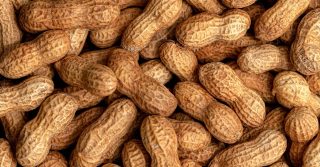Baking soda has become a popular DIY skin care ingredient on social media, with creators claiming it brightens dark spots, evens skin tone, and clears acne. Some people mix baking soda with water and apply it to the face; others combine it with coconut oil or petroleum jelly to make at-home scrubs and masks. While these hacks seem cheap and immediate, dermatologists warn they can do more harm than good.
There’s little evidence supporting baking soda for skin care. Pooja Sodha, MD, an associate professor of dermatology, emphasizes that skin appearance reflects many factors beyond a single ingredient, such as genetics, sleep, diet, and lifestyle. Believing one kitchen product will dramatically change skin is overly simplistic and potentially dangerous.
People often report that their skin looks “brighter” after using baking soda. Hannah Kopelman, MD, explains why this can be misleading: the apparent improvement typically comes from removing surface oil and dead cells, not from treating deeper pigment. Hyperpigmentation is driven by melanin in lower skin layers, which baking soda cannot reach. In some cases, especially in medium-to-deeper skin tones, baking soda use has actually led to darker discoloration.
For acne-prone skin, baking soda can appear to help at first by drying out pimples, but it often leads to redness, peeling, and more breakouts. That’s because baking soda is harsh and can damage the skin barrier. When the barrier is compromised, bacteria and irritants penetrate more easily, increasing inflammation. Sodha notes that repeated use can strip the skin’s acidic protective layer and natural oils, causing dryness, sensitivity, and worsening of chronic conditions like eczema or psoriasis.
A key concern is pH disruption. Healthy skin is slightly acidic, which helps retain moisture and fend off microbes. Baking soda is alkaline and can shift that balance, leaving skin dry, flaky, and easily irritated. Long-term or repeated irritation can produce chronic redness, sensitivity, burning, stinging, small cracks, or dark patches that take months to fade. Acne-prone and sensitive skin types are particularly susceptible.
Safer, evidence-backed options exist for exfoliation and brightening. Kopelman recommends ingredients such as salicylic acid, glycolic acid, and niacinamide, which are affordable and supported by research. True improvement comes from consistent, gentle care rather than aggressive kitchen remedies.
If you’ve already used baking soda and your skin is tight, dry, or red, stop using it immediately. Focus on calming and repairing the barrier: use a hydrating cleanser and a soothing moisturizer containing ceramides, squalane, or panthenol for at least a week, and avoid exfoliating or strong actives during recovery. If irritation persists, see a dermatologist for treatment to reduce inflammation and restore skin health.
In short, social media beauty hacks promising quick fixes often lack scientific backing and can cause lasting damage. Choose proven, gentle products and consult a professional when in doubt.






